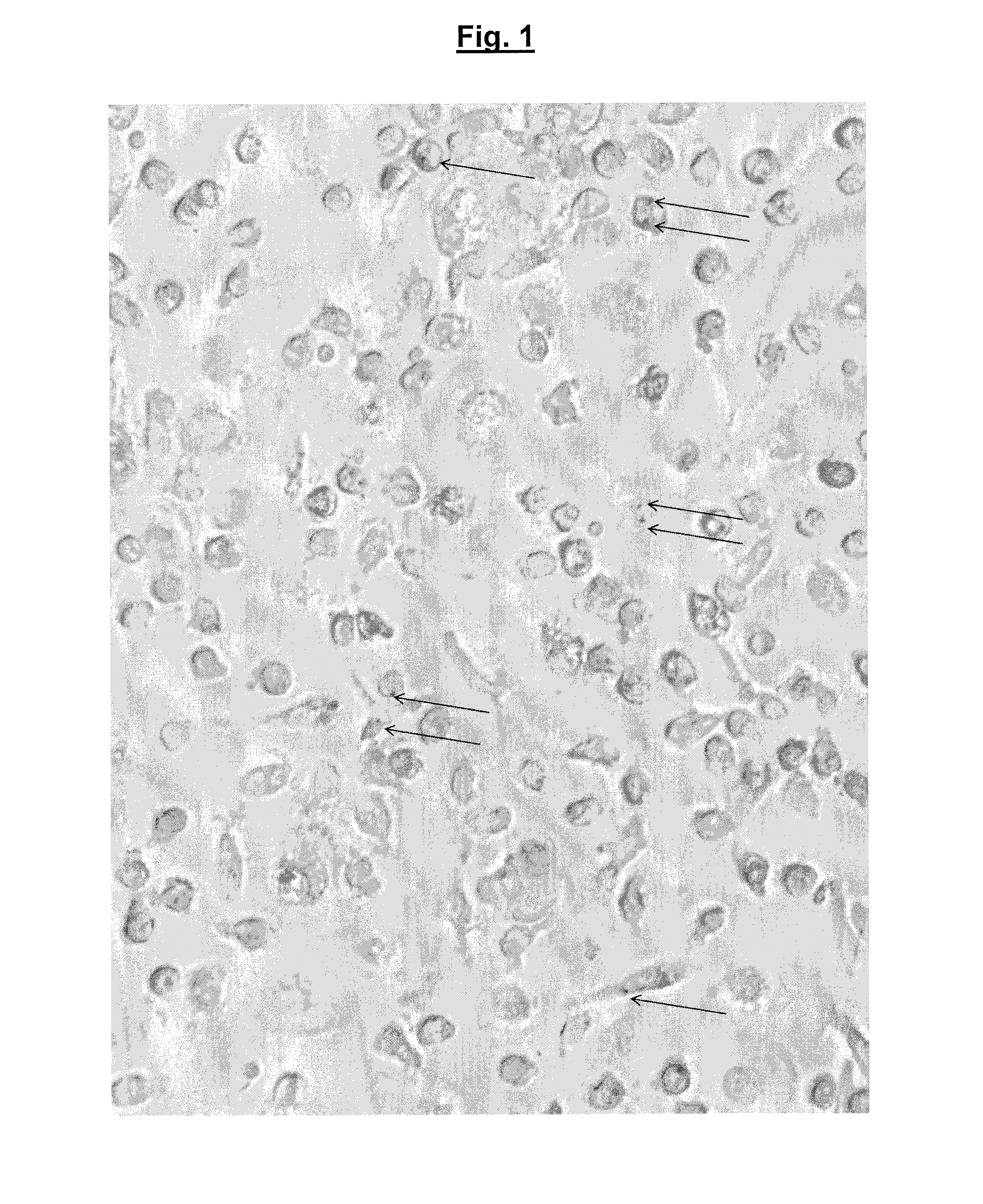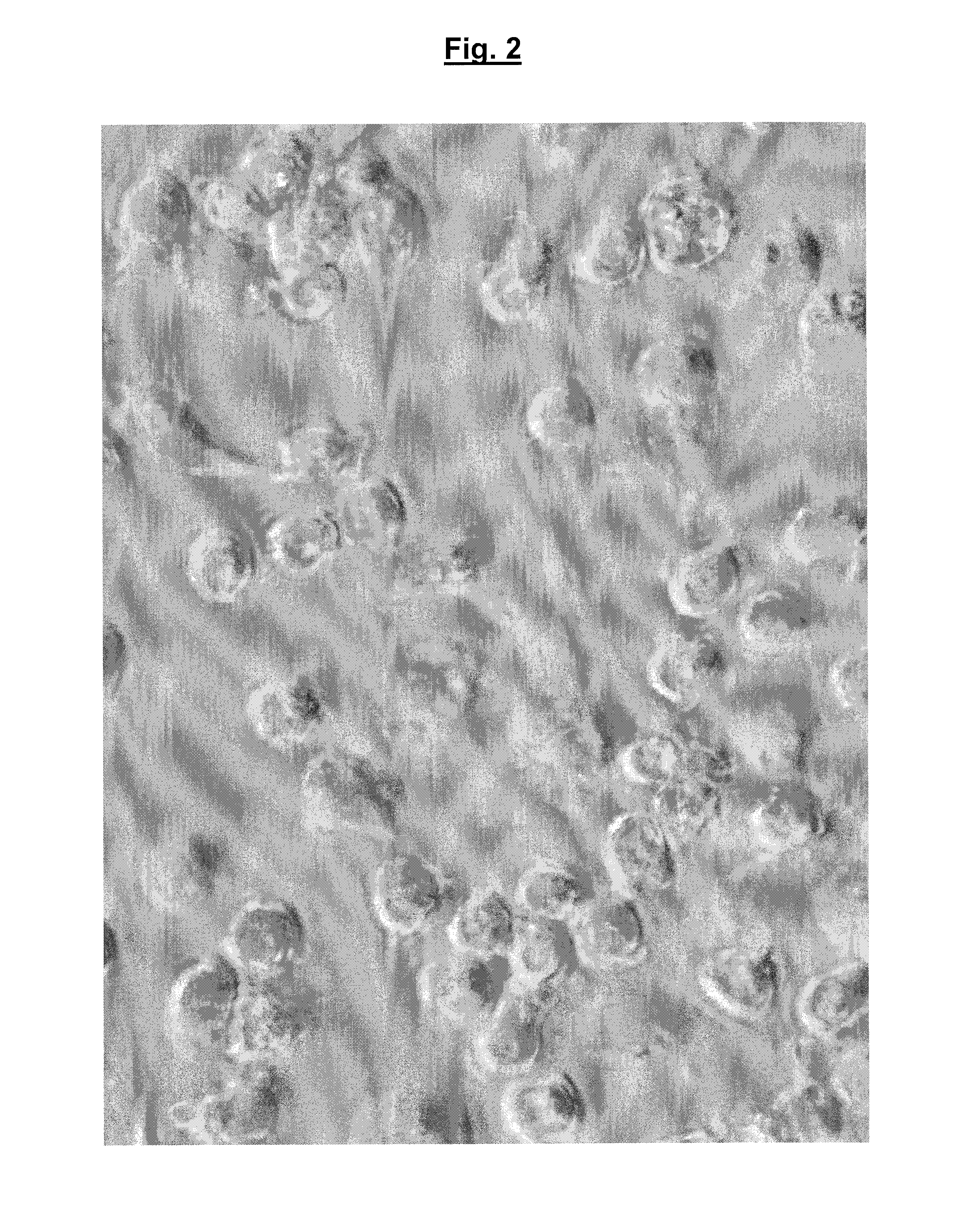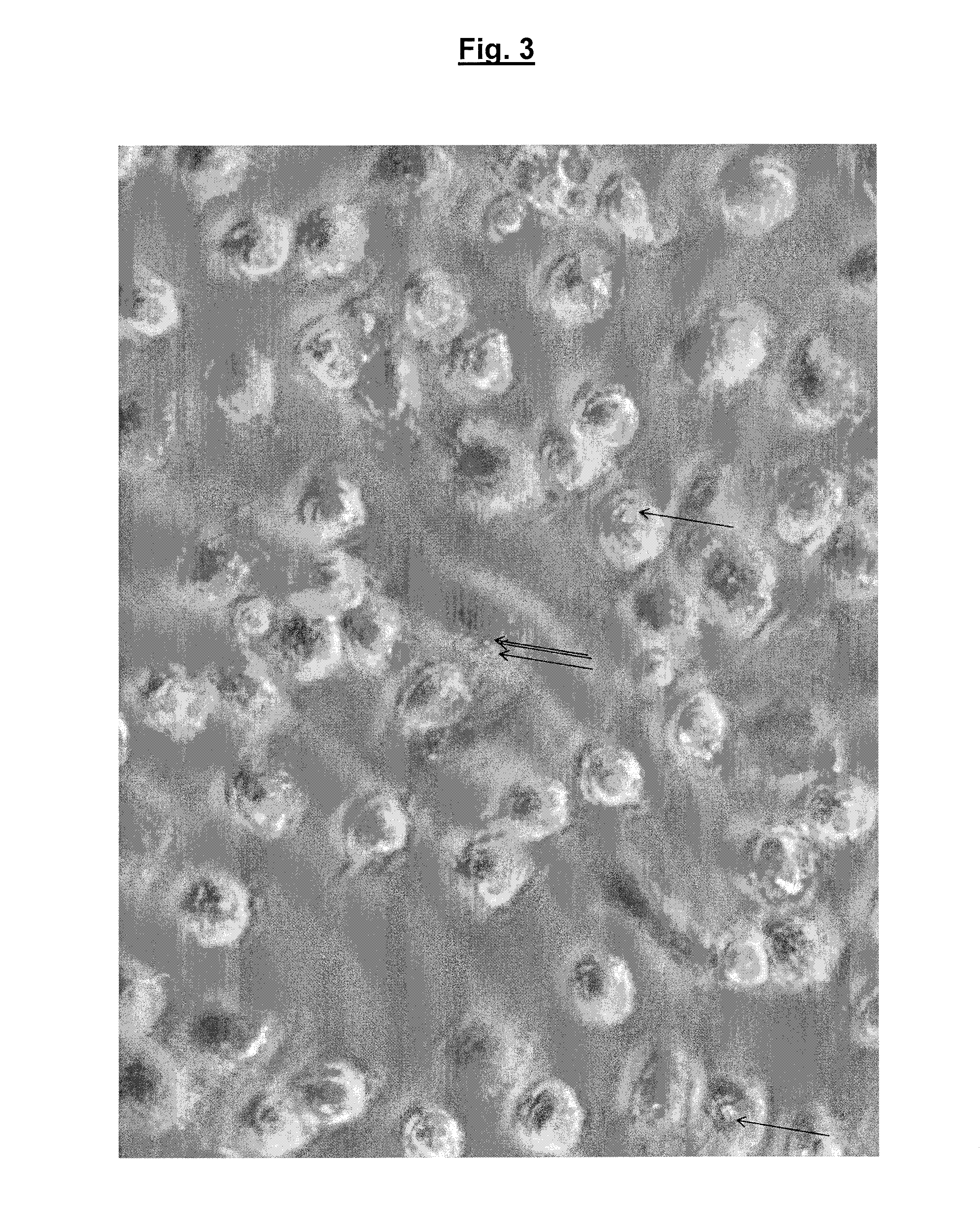Treatment of intracellular bacterial infection
a bacterial infection and intracellular technology, applied in the field of bacteriaophage, can solve the problems of drug resistant strains and poor patient complian
- Summary
- Abstract
- Description
- Claims
- Application Information
AI Technical Summary
Benefits of technology
Problems solved by technology
Method used
Image
Examples
example 1
Uptake of Submicron Polymeric Particles, with Bacteriophage Attached, into Macrophages
Experimental
[0090]Nylon particles (100 nm mean diameter) containing immobilised bacteriophages (phage Shield, host bacteria Salmonella typhimurium) were incubated with CD14+ macrophages. The macrophages were visualised using light microscopy to determine the presence of beads and then washed and plated onto a lawn of host bacteria. Any surviving active immobilised bacteriophages produce a “plaque” which highlights inhibition of bacterial growth.
Cell Culture:
[0091]CD14+ cells (macrophage) isolated from human blood samples were cultured in suspension in Dulbecco's Modified Eagle's Medium (DMEM) supplemented with 2 mM L-glutamine and 10% fetal bovine serum with a 5% CO2 atmosphere at 37° C. A split ratio of 1:5 was used, the medium being replaced every 2 to 3 days.
Particle Production:
[0092]Nylon particles were treated by corona discharge (75 kV field) and rapidly added to a bacteriophage suspension at...
example 2
Testing the Effect of Immobilised Bacteriophage on the Invasive Salmonella enterica Subsp Typhimurium Strain SL1344 in Macrophages
[0097]Testing was carried out as follows:
Method
[0098]Raw 264 macrophage cells (http: / / www.lgcstandards-atcc.org / products / all / TIB-71.aspx?geo_country=gb) were seeded at 5×104 cells / ml in a 24-well tissue culture plate in RPMI (RPMI-1640, Roswell Park Memorial Institute) medium containing glutamine and 10% fetal calf serum (FCS) and incubated overnight at 37° C., 5% CO2.
[0099]The macrophage monolayers were activated overnight with 1 μg / ml lipopolysaccharide (LPS) which was added to the media and incubated overnight at 37° C., 5% CO2. LPS-activated macrophages show a more consistent level of invasion by the Salmonella bacteria.
[0100]Macrophage monolayers were washed and new medium added without antibiotics. Various test combinations of immobilised bacteriophage and bacteria were added as detailed in the table 1, below.
TABLE 1Test conditions.CombinationsTime ...
PUM
| Property | Measurement | Unit |
|---|---|---|
| diameter | aaaaa | aaaaa |
| diameter | aaaaa | aaaaa |
| diameter | aaaaa | aaaaa |
Abstract
Description
Claims
Application Information
 Login to View More
Login to View More - R&D
- Intellectual Property
- Life Sciences
- Materials
- Tech Scout
- Unparalleled Data Quality
- Higher Quality Content
- 60% Fewer Hallucinations
Browse by: Latest US Patents, China's latest patents, Technical Efficacy Thesaurus, Application Domain, Technology Topic, Popular Technical Reports.
© 2025 PatSnap. All rights reserved.Legal|Privacy policy|Modern Slavery Act Transparency Statement|Sitemap|About US| Contact US: help@patsnap.com



